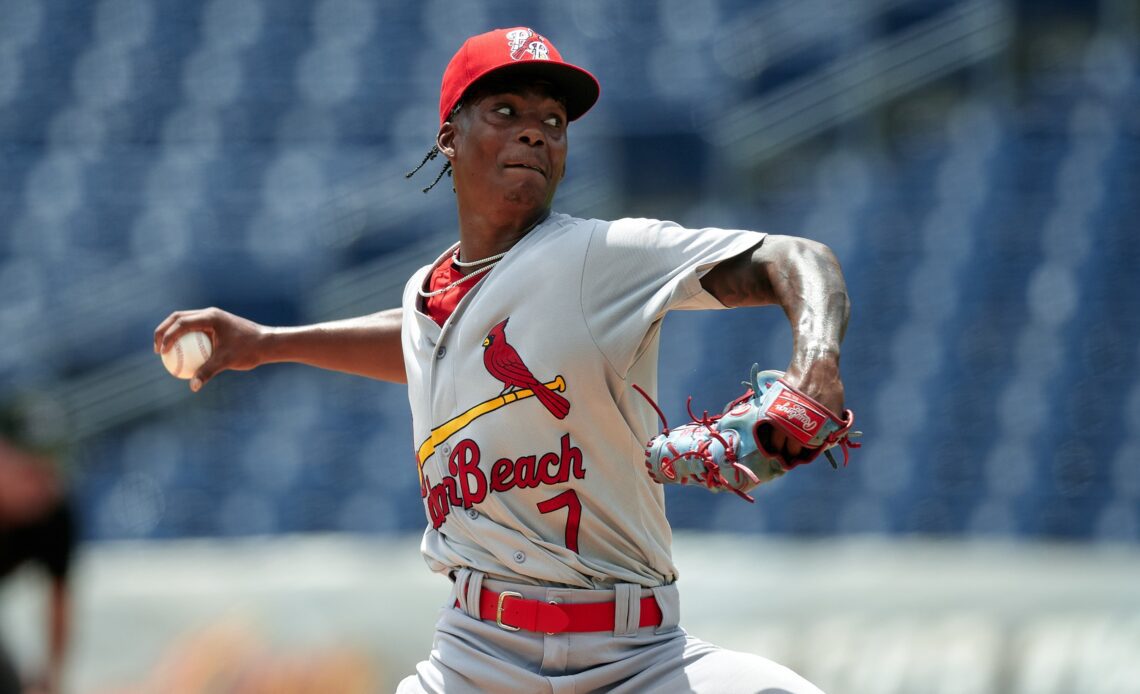There’s few rushes I experience that match the excitement of seeing a radar gun flash 100 mph. If you catch the right fastball on the right day you might hear it cut through air on its way to the plate. Despite the movement to lower fastball usage across the game, there’s still nothing like a plus fastball. Ask any pitcher that throws one.
In an effort to expand upon last year’s Best Pitches In The Top 100 article, this year we’ve decided to make it a limited series. In an effort to illustrate the process behind the rankings, we’ll look at a variety of different metrics to determine the best pitches. From pitch type to pitch type, different metrics will have varying levels of importance. Before we get into the rankings we’ll explain what measures and statistics we’re looking at and what they all mean.
Key Fastball Metrics
Velocity: This one is simple—the harder you throw the better.
Spin Axis: How you spin the baseball and the movement generated by that spin is far more important than your raw spin rate. One way to determine the efficiency of a fastball’s movement is to look at the spin axis. This helps define the movement profile of the pitch. For example, a sinker has a different spin axis from a four-seam fastball with heavy bore and life, etc.
Induced Vertical Break (IVB): This is a metric used by ball flight-capturing devices (For example: Trackman) to determine how much a baseball moves up or down from a central point of zero. Good four-seam fastballs average between 17 to 18 inches of induced vertical break. Anything above 19 inches is considered elite. The pitchers capable of hitting 20 inches of induced vertical break are in the upper echelons. This metric removes gravity from the equation.
Vertical Approach Angle (VAA): Every pitch has a vertical approach angle. Its reading varies in importance from pitch to pitch. When it comes to fastballs, generally speaking, the flatter the better. Elite vertical approach angles on four-seam fastballs are below -4.3 degrees. There’s a handful of pitchers throughout baseball that throw a fastball with an average vertical approach angle flatter than -4.2 degrees, but almost universally that group generates higher whiff rates than those outside that range.
Whiff Rate: The rate of total swings against a pitch that results in a swinging strike or a whiff. This is the purest way to determine how well a given pitch misses bats.
Chase Rate: The rate of total swings against a pitch that induces chases…
Click Here to Read the Full Original Article at Baseball America RSS…

